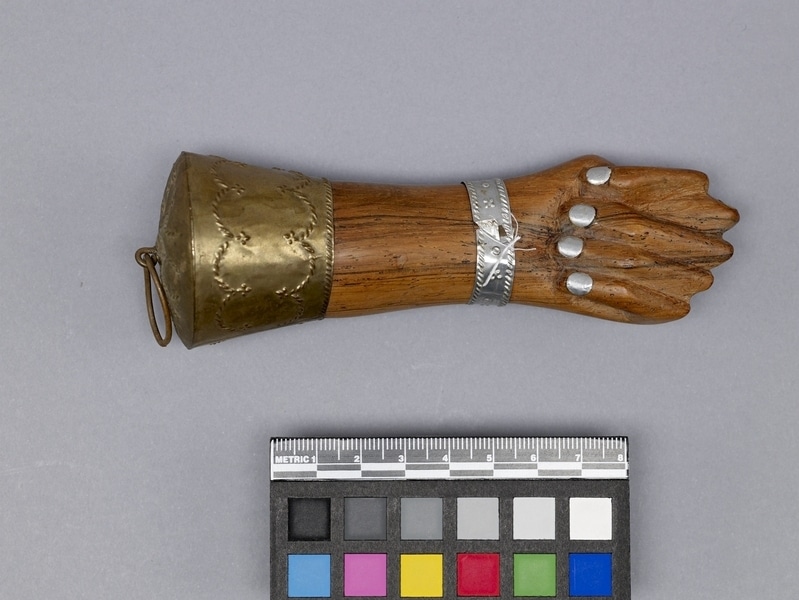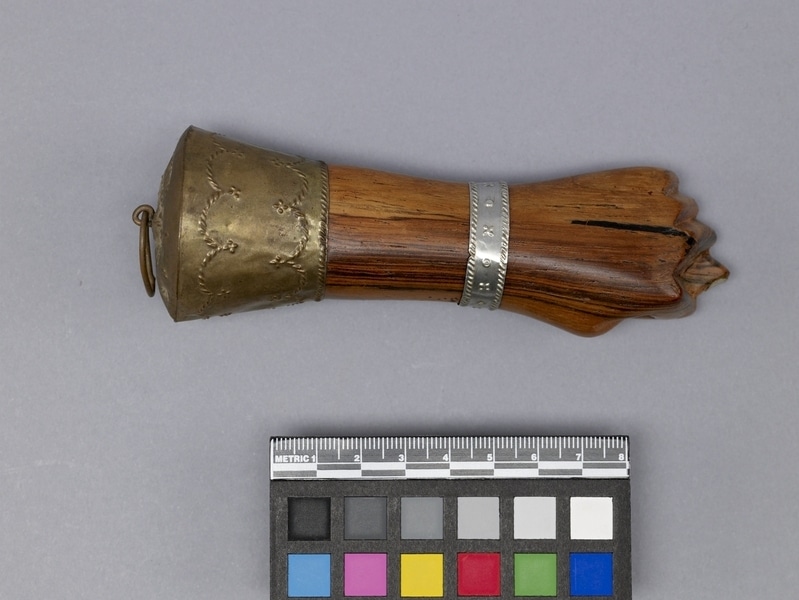Charm Item Number: 2738/122 from the MOA: University of British Columbia



Description
Wood good luck charm or "figa" in the shape of a left hand clenched into a fist. The thumb is held between pointer and index fingers and all digits have silver coloured metal fingernails. Around the wrist is an embossed tin bracelet and at the end is fitted an embossed metal cap with a moveable ring in the centre.
History Of Use
This Afro-Brazilian charm (fig, figa or figas) is part of a modern charm bracelet known as balangandan, whose roots reach back to the 17th century. The figa originates from a Mediterranean symbol used to impact fertility and ward off evil spirits. Women of African descent wear a balangandan to adorn the thick chain belts they hang about their waists. On special occasions they might attach it to their wrists. When not in use, the balangandan hangs in the house near the door. As a religious object, the charms on a balangandan could be interpreted as both Christian and representing certain African gods. Other charms were intended to impart good fortune, happiness, prosperity or good health. A third type of charm was selected out of gratitude for, and in commemoration, of having survived misfortune, such as an accident or illness. Balangandans dating post-19th century, were commonly made of brass or copper, and were coveted for their craftsmanship and beauty, rather than their monetary value. Since the 1980s, various modern versions have emerged, made from new materials and featuring different types of charms.
Item History
- Made in Salvador, Bahia, Brazil
- Owned by Blanca Muratorio and Ricardo Muratorio before May 1, 2009
- Received from Blanca Muratorio (Donor) and Ricardo Muratorio (Donor) on May 1, 2009
What
- Name
- Charm
- Identification Number
- 2738/122
- Type of Item
- charm
- Material
- wood, copper alloy metal and tin metal
- Overall
- height 14.0 cm, diameter 4.8 cm
Who
- Culture
- Brazilian
- Previous Owner
- Blanca Muratorio and Ricardo Muratorio
- Received from
- Blanca Muratorio (Donor) and Ricardo Muratorio (Donor)
Where
- Holding Institution
- MOA: University of British Columbia
- Made in
- Salvador, Bahia, Brazil
When
- Ownership Date
- before May 1, 2009
- Acquisition Date
- on May 1, 2009
Other
- Condition
- good
- Accession Number
- 2738/0122